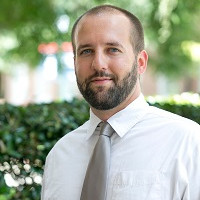
-
Register
- Non-member - $25
- Member - Free!
- Student - Free!
- Staff - Free!
- Certified Student - Free!
- Retired - $15
NATA's Sports Science and Data Analytics Task Force recommends completing Module 1 before viewing this module, as it provides the essential foundation for the entire series. After finishing Module 1, the remaining modules may be completed in any order.
Abstract:
Many techniques exist for preventing overuse and fatigue-related injuries. While several of these tactics are well known and implemented in the professional and collegiate sports setting, the secondary school setting is largely underserved. This identifies a gap in practice where sports science can greatly affect a significant number of practicing clinicians and their patient populations as the secondary school setting has the largest population of athletic trainers and prospective patients. Therefore, examining tactics for preventing overuse and fatigue-related injuries in the secondary school setting from a sports science aspect can be key. A novel approach was taken to incorporate objective and qualitative data into daily decision making for injury prevention, rehabilitation, and optimal performance. The model consisted of two primary objectives for student-athletes: 1) maximize performance, 2) minimizing time-loss injuries. Utilizing team-wide objective and qualitative data showed promise in maximizing performance while minimizing time-loss injuries in our population over the three year-long time frame. Additionally, implementing care that was based on these same objective data metrics facilitated an expedited return to play for several players compared to players who received routine care that was not based on objective data metrics. Completion of the year-long tracking showed feasibility and applicability of these interventions in the secondary school setting among a variety of sports, emphasizing the importance of data-driven practice and expansion of sports science opportunities in the secondary school setting.
Learning Objectives:
- Summarize both objective and qualitative data to improve the outcomes for student-athletes in the secondary school setting.
- Analyze findings of these objective and qualitative measures to create a working model to improve the outcomes in their own practice setting(s).
- Design a data driven decision making model for practice setting(s).
Level:
Advanced
Domain(s):
Domain 1: Risk Reduction Wellness and Health Literacy
Domain 2: Assessment Evaluation and Diagnosis
Domain 4: Therapeutic Intervention
Domain 5: Health Care Administration and Professional Responsibility
CEUs:
1.0 Category A
Keywords: secondary school, data, decision making model, qualitative, sports science,
On-Demand (Enhanced Access) Course Expiration:
Courses registered for after February 5, 2025, must be completed by December 31, 2025, at 11:59 p.m. CST.
For full details, refer to the expiration policy on our FAQ page.

Kyle Southall, PhD(c), LAT, ATC, PES, CSCS
Kyle Southall, currently serves as an Athletic Trainer and Director of Sports Science and Performance for Briarwood Christian School while completing his PhD in Rehabilitation Sciences from UAB. Before BCS Kyle served as the Director of Clinical Education for the undergraduate and master’s in athletic training programs at Samford University since 2016. Kyle previously served as head athletic trainer at Birmingham-Southern College from 2013-2016 and assistant athletic trainer from 2012-2013. Kyle is Critical Incident Stress Management (CISM) trained and currently the state representative for the NATA ATs Care as well as on the SEATA ATs Care Committee and NATA National ATs Care Committee. Kyle became a member of Team USA Sports Medicine in the Spring of 2016 and has traveled with a variety of teams to Japan, Mexico, Dominican Republic, and Israel. Kyle is nationally certified by the BOC and is licensed by the Alabama Board of Athletic Trainers. Kyle is a 2010 graduate of Ohio University in Athens, Ohio, with a Bachelor of Science in Athletic Training. He did his post-graduate work at West Virginia University, where he received a Master of Science in Athletic Training in 2012. Kyle was also an adjunct professor in the athletic training and sports science department at Waynesburg University and West Virginia University during his time in Morgantown. Also, while at WVU Kyle became level-1 Graston trained, a certified strength and conditioning specialist (CSCS) and became a certified Performance Enhancement Specialist (PES) through the National Academy of Sports Medicine. In his free time Kyle enjoys spending time with his family and friends, fishing, and traveling with his wife, Emily and daughter Brinley.
